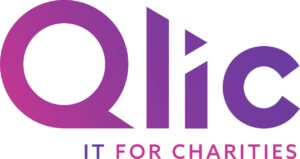
Smart data management for charities has moved from a “nice-to-have” to an absolute essential, and any sound data management strategy includes a strong data recovery plan.
Data recovery is more than just a technical concern; it’s a fundamental part of running a resilient and effective nonprofit. From donor records and financial breakdowns, the impact of your programmes, who your volunteers are, all that vital information lives in your digital systems.
As charities become progressively reliant on digital tools and cloud-based platforms, safeguarding that important data has never been more important.
This blog offers practical advice on data recovery and data backup for nonprofits. Whether you’re just beginning to create your IT strategy or looking to improve your existing processes, understanding how to plan for and recover from data loss is essential to long-term success.
How Data Recovery for Charities Works
Data recovery refers to the process of retrieving information that has been lost, messed up, damaged, or just plain inaccessible from various storage devices, such as hard drives, SSDs, USB sticks, or even cloud storage. Data recovery becomes necessary when the data can no longer be accessed through standard operations.
For charities, losing access to donor databases, fundraising records, or critical program files means disrupting their business operations. Understanding how and why data loss occurs is the first step toward safeguarding your organisation from it.
Here are some of the most common causes of data loss and what they involve:
- Accidental deletion
- Hardware failure
- Software corruption
- Formatting
- Viruses and malware
- Natural disasters
Accidental deletion
This is one of the most common reasons data recovery becomes necessary. Staff or volunteers may unintentionally delete important files or folders, especially when managing shared drives or working remotely. Without a reliable backup system in place, this kind of loss can be challenging to reverse.
Hardware failure
Storage devices like hard drives and SSDs can physically fail due to wear and tear, power surges, or manufacturing defects. Over time, all hardware becomes more prone to failure, which is why maintaining a proper hardware lifecycle is key for charities that want to prevent unexpected data loss.
Software corruption
Errors within your file system or operating system can render files unreadable or inaccessible. These issues can stem from improper shutdowns, compatibility problems, or even failed software updates. Keeping software regularly updated with security patches and bug fixes can substantially reduce this risk.
Formatting
Sometimes, storage devices are accidentally or even intentionally formatted, which wipes the data from them. If the drive was not backed up, this can result in the complete loss of everything stored on it.
Viruses and malware
Malicious software can infect systems and either delete files or make them inaccessible. Some malware can also secretly send your data (like personal information, passwords, or documents) to hackers, causing data loss and privacy risks.
Another risk is ransomware, which can lock your files and demand payment to unlock them. If you can’t pay or recover the files, you lose them.
Nonprofits are particularly vulnerable to cyber threats, and even a single infection can wreak havoc if there are no data recovery plans in place.
Natural disasters
Events such as fires, floods, earthquakes or severe storms can physically damage your IT infrastructure. These situations frequently result in IT system outages, which interrupt daily operations and can permanently destroy locally stored data.
Why Data Recovery Matters for Charities
For charities, data is as essential as their mission. The information you collect and store, ranging from donor details and financial statements to service delivery records and volunteer databases, is critical to the smooth running of your organisation. Losing access to this data, even temporarily, can significantly hinder your ability to operate, deliver services, and maintain donor trust. In addition, your charity might incur costs to hire a data recovery service provider to retrieve the lost data.
The goal of data recovery is to save as much of the original information as possible and restore it to a usable state. But recovery is only possible if your organisation has employed solid data backup practices. With regular backups, your charity becomes far more resilient to unexpected disruptions, particularly cybercrime.
It’s a sobering reality, but cyber-attacks against nonprofits are becoming increasingly common, and without solid recovery plans, your charity is left vulnerable.
Examples of cyber threats include:
- ransomware attacks
- phishing scams
- spear phishing
- data breaches
All of which can lead to significant data loss.
Regulatory Compliance
Imagine losing key documents, grant applications, donor and membership lists, charity event plans, or your organisation’s entire financial history. For nonprofits, lost data can be damaging, not just operationally but also reputationally. Stakeholders, funders, and regulators expect charities to manage data responsibly and transparently.
Beyond the immediate disruption, your data recovery and backup practices are deeply intertwined with regulatory compliance. Under GDPR, charities must demonstrate that they have appropriate data protection measures in place. If your charity experiences a data breach or loss and cannot prove it had proper systems in place, it could face fines or other penalties. In fact, real-world cases of charity fraud often highlight precisely this kind of inadequate protection, reinforcing the need for strong data governance.
How to Develop a Strong Data Backup and Recovery Strategy
Prevention is always better than cure, especially when it comes to your charity’s data. A well-planned backup and recovery strategy doesn’t just help you respond to data loss; it reduces the chances of it happening in the first place.
By putting robust systems in place, your nonprofit can continue operating with minimal disruption, even in the face of surprising events.
Data Backup vs. Data Recovery
Before diving into best practices, it’s important to differentiate between data backup and data recovery, two terms that are often used interchangeably but serve different purposes:
- Data backup refers to the process of copying and storing data in a secure location, such as the cloud or an external drive, so that it can be restored if the original is lost or compromised.
Example: Your fundraising software is backed up nightly to a secure cloud server. If a system failure occurs, you can restore the previous night’s data.
- Data recovery is the process of retrieving data that has been lost due to accidental deletion, corruption, hardware failure, or other incidents.
Example: After a power outage causes a system crash, your charity retrieves donor records from a backup copy using data recovery tools.
Both are essential components of a reliable IT strategy for charities.
Identify and Categorise Your Data
One of the first steps in building a strong data backup and recovery plan is understanding what data your charity holds. You need a clear picture of what you’re protecting and how valuable or sensitive it is.
Start by listing and categorising the different types of data you store:
- Donor databases (contact information, donation history)
- Beneficiary records (personal details, case files, support provided)
- Financial records (accounting, payroll, grant documentation)
- Volunteer and staff information (HR records, schedules, training logs)
- Program data (impact metrics, service delivery reports)
- Operational files (strategic plans, policies, meeting minutes)
Once you’ve created a full inventory, you can arrange which data is most critical to your operations. For example, financial data and donor details may require more regular backups and tighter security measures due to their sensitivity and regulatory implications.

Assign a Level of Criticality to Each Type of Data
Once your data has been categorised, the next step is to evaluate its criticality, how essential it is to your operations, compliance, and continuity.
This assessment will help guide your backup frequency, storage methods, and recovery time priorities.
- High: Data that, if lost, would brutally impact your operations, finances, or legal compliance.
Examples of critical data: Donor databases, financial records, and safeguarding documentation.
Action: Requires frequent backups and rapid recovery protocols.
- Medium: Data that would cause operational disruption but could be recovered with slight downtime.
Examples: Staff schedules, internal reports, event plans.
Action: Needs regular backups and recovery within a reasonable timeframe.
- Low: Data whose loss would be inconvenient but not operationally critical.
Examples: Outdated reports, archived marketing assets.
Action: May require less frequent backups and longer recovery windows.
Keep Your Backup Separate from Your Computer
One of the most significant practices in protecting your data is ensuring that backups are stored separately from your main systems. If your backups are kept on the same network or device, they are equally vulnerable to threats like ransomware.
In a ransomware attack, for example, cybercriminals encrypt your data and demand payment for its release. If your backup is connected to the infected network, it could be compromised too. Keeping backups physically or logically isolated can help you escape these consequences.
Keep Data Backup in Multiple Places
Storing your data in multiple locations adds an extra layer of protection and ensures that a single point of failure won’t jeopardise everything. A solid strategy usually combines:
- Local backups: External hard drives or on-premise servers for fast recovery.
- Offsite backups: Managed backup services or cloud solutions like Google Drive, Dropbox, or Microsoft OneDrive.
- Software-as-a-Service (SaaS): Many apps, such as Salesforce or accounting software, include automated backup features. Ensure these are configured correctly.
Using a combination of these options will ensure that your data is both secure and easily recoverable in different scenarios.
Define Your Recovery Objectives
When planning for recovery, two key metrics should guide your approach:
- Recovery Time Objective (RTO): This defines how quickly your charity needs to restore access to specific types of data following an incident. For example, you may need to recover donor databases within hours, while older marketing materials can wait longer.
- Recovery Point Objective (RPO): This defines how much data your organisation can afford to lose, measured in time. If your donor system is updated daily, an RPO of 24 hours might be acceptable. For financial transactions, near-zero data loss might be necessary, meaning more regular backups.
Make Daily Backups a Business Habit
Backing up your data should become a routine part of your organisation’s daily operations. Automating daily backups, where possible, helps prevent human error and ensures that recent data is always protected. Daily backups significantly reduce your RPO and help avoid major disruptions when incidents occur.
Determine Your Backup Schedule and Retention Policy
Your backup strategy should be tailored to how often your data changes and how long you need to retain historical records:
- Backup Frequency: Align this with your RPO. Critical systems may need daily (or even hourly) backups, while less dynamic data can be backed up weekly.
- Retention Policy: Decide how long backups are kept. Some data, like financial records, may need to be retained for 6–7 years for legal compliance. Others may only need short-term retention. Having defined retention timelines also helps manage storage costs effectively.
Document and Test Your Strategy
Finally, your data backup and recovery strategy should be clearly documented. This plan should include:
- A full inventory of all data and its criticality level
- Defined RTO and RPO for each category
- Chosen backup methods (cloud, local, SaaS) and schedule
- Your data retention policy
Make this document accessible to all relevant team members and integrate it into onboarding for new staff. Frequently test your backup systems and recovery process to ensure everything works as expected in a real-world scenario. Testing reveals gaps and helps prevent surprises when you’re under pressure.
Choosing the Right Backup Solutions for Your Nonprofit
When it comes to protecting your charity’s data, selecting the right backup solution is a strategic decision that should align with your organisation’s size, budget, IT infrastructure, and team capabilities. There’s no one-size-fits-all approach, but choosing wisely ensures your backups are both effective and sustainable.
One of the most accessible and variable options available to nonprofits today is cloud storage solutions. These platforms allow you to store data securely online, with the added benefit of remote access, automatic syncing, and built-in redundancy.
Whether you opt for a cloud-only solution or a hybrid model combining local and cloud backups, your chosen system should be secure, simple to use, and aligned with your data recovery objectives. Ultimately, your backup solution is not just a technical tool, it’s a principal part of your charity’s operational resilience.
Final Thoughts
In an increasingly digital world, charities depend on their data to deliver services, manage operations, and maintain the trust of donors and beneficiaries. A clear, well-documented data recovery strategy, combined with reliable, routine data backups, is fundamental to protecting your organisation from interference, loss, or reputational damage.
Remember, your data strategy isn’t a one-time effort. It should develop alongside your charity. Review and update your backup and recovery plan at least annually, or whenever there are sizable changes to your IT systems or services.
Would your charity like to learn more about data backups and recovery?
Get in touch with the team at Qlic IT here.




